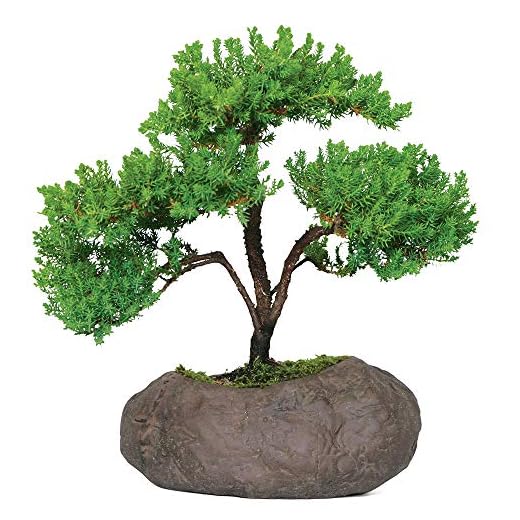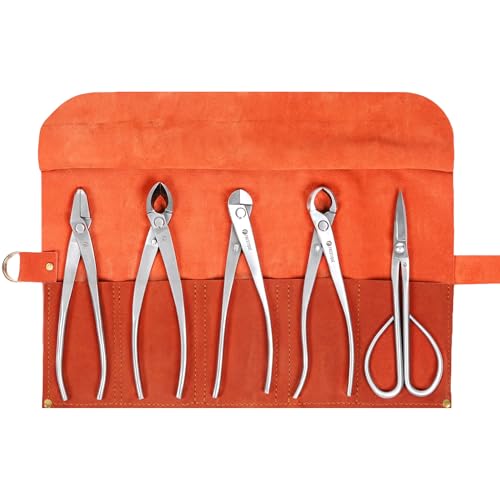
If you’ve noticed that your outdoor bonsai tree has turned yellow, there are a few possible reasons for this change in color. Bonsai trees require specific care and attention, and any deviation from their optimal conditions can result in leaf discoloration. Understanding the potential causes of yellowing leaves can help you address the issue and restore your bonsai tree’s health.
One possible reason for yellowing leaves is overwatering. Bonsai trees require a delicate balance of moisture, and excessive watering can lead to root rot. When the roots are unable to properly absorb nutrients and oxygen from the soil, the leaves may turn yellow as a sign of distress.
On the other hand, underwatering can also cause leaf yellowing. When a bonsai tree lacks sufficient water, it becomes dehydrated, which can result in the yellowing and eventual shedding of leaves. To prevent underwatering, it is important to regularly check the moisture levels in your bonsai tree’s soil and water accordingly.
Another potential cause of yellowing leaves is improper lighting conditions. Bonsai trees thrive in bright but indirect sunlight. If your bonsai tree is not receiving enough light or is exposed to direct sunlight for extended periods, it may exhibit yellowing leaves as a response to stress. Adjusting the positioning of your bonsai tree or providing shade during the hottest part of the day can help maintain the ideal lighting conditions.
Possible causes of yellowing outdoor bonsai trees
Yellowing of outdoor bonsai trees can be a sign of various issues. Here are some common causes to consider:
1. Lack of sunlight: Bonsai trees require a good amount of sunlight to thrive and stay healthy. If your bonsai tree is not getting enough sunlight, it may start to turn yellow.
2. Overwatering: Bonsai trees need a well-draining soil and should not be overwatered. Too much water can cause the roots to rot, leading to yellowing leaves.
3. Underwatering: On the other hand, if the bonsai tree is not receiving enough water, its leaves may start to turn yellow and dry out. It is important to provide the right amount of water to keep the soil evenly moist.
4. Nutrient deficiency: Bonsai trees require specific nutrients to stay healthy. If the tree is lacking essential nutrients like nitrogen, magnesium, or iron, it can result in yellowing leaves.
5. Pest infestation: Insects like aphids, spider mites, or scale insects can attack outdoor bonsai trees and cause damage, leading to yellow leaves. Regularly inspect your bonsai tree for any signs of pest infestation.
6. Disease: Certain diseases like root rot, powdery mildew, or fungal infections can cause yellowing of the leaves in bonsai trees. Prompt treatment is necessary to control the spread of the disease.
7. Environmental stress: Extreme temperatures, high humidity, or exposure to harsh winds can cause stress to outdoor bonsai trees, resulting in yellowing of the leaves.
8. Improper pruning: Incorrect pruning techniques or excessive pruning can put stress on the bonsai tree, leading to yellowing leaves. It is crucial to follow proper pruning practices.
Identifying the specific cause of yellowing in your outdoor bonsai tree is essential for addressing the issue and taking appropriate action. Consult with a bonsai expert or horticulturist for further guidance if needed.
Tips for preventing yellowing in outdoor bonsai trees
1. Proper watering: One of the most common causes of yellowing in outdoor bonsai trees is improper watering. It is important to water your bonsai tree regularly and adequately. Make sure the soil is moist but not waterlogged, as overwatering can lead to root rot and yellowing leaves.
2. Sunlight exposure: Another key factor for the health of your outdoor bonsai tree is its exposure to sunlight. Bonsai trees require a good balance of sunlight and shade. Be mindful of the specific sunlight requirements of your tree species and provide the appropriate amount of direct or indirect sunlight accordingly.
3. Soil quality: The type of soil used for your outdoor bonsai tree is crucial in preventing yellowing. Ensure that the soil is well-drained and provides adequate aeration for the roots. A good-quality bonsai soil mix, consisting of a blend of organic and inorganic particles, can help promote healthy growth and prevent yellowing.
4. Fertilizer application: Outdoor bonsai trees require regular fertilization to maintain their health and prevent nutrient deficiencies that can lead to yellowing. Use a balanced bonsai fertilizer that provides the necessary nutrients in the correct proportions. Follow the recommended dosage and application guidelines for your specific bonsai tree species.
5. Pests and diseases: Keep a vigilant eye for any signs of pests or diseases that can cause yellowing in your outdoor bonsai tree. Regularly inspect the leaves, branches, and soil for any abnormalities, such as discoloration, spots, or wilting. Treat any pest infestations or diseases promptly and appropriately to prevent further damage.
6. Pruning and shaping: Proper pruning and shaping of your outdoor bonsai tree can help maintain its health and prevent yellowing. Regularly remove any dead or dying branches and leaves to promote new growth. Additionally, shaping your bonsai tree correctly can ensure proper airflow and sunlight penetration, aiding in preventing yellowing.
7. Seasonal care: Outdoor bonsai trees may require specific care during different seasons. Be aware of any specific requirements for your bonsai tree species in terms of temperature, humidity, and watering during different seasons. Adjust your care routine accordingly to prevent yellowing and promote overall health.
8. Avoid stress: Bonsai trees, like any other plants, can become stressed due to various factors, such as extreme temperatures, improper care, or changes in environment. Minimize stress on your outdoor bonsai tree by providing consistent care, avoiding sudden changes in temperature or watering, and ensuring a suitable environment for its growth.
By following these tips, you can help prevent yellowing in your outdoor bonsai tree and promote its overall health and beauty.
Steps to revive a yellowing outdoor bonsai tree
If your outdoor bonsai tree has turned yellow, it may indicate that it is stressed or not receiving optimal care. However, with prompt action and proper care, you can revive your bonsai tree and restore its health. Here are some steps to help you with the process:
- Check the watering:
Make sure you are watering your bonsai tree correctly. Both under-watering and over-watering can cause the leaves to turn yellow. Ensure that the soil is moist but not waterlogged. Adjust the watering schedule accordingly. - Examine the sunlight:
- Inspect the soil:
- Fertilize the bonsai:
- Prune and trim:
- Protect against pests:
- Provide winter protection:
Inspect the location of your bonsai tree to ensure it is receiving the appropriate amount of sunlight. Most outdoor bonsai trees prefer a balance of sun and shade. If the tree is not getting enough light, consider moving it to a sunnier spot or providing some shade if it’s receiving too much direct sunlight.
Check the quality of the soil in the bonsai pot. It should be well-draining to prevent waterlogged roots, which can lead to yellowing leaves. If the soil is compacted or retaining too much moisture, repot the bonsai tree using a suitable bonsai soil mixture.
Apply a balanced fertilizer specifically formulated for bonsai trees. This will help provide the necessary nutrients to encourage healthy growth and vibrant foliage. Follow the instructions on the fertilizer packaging for the correct dosage and frequency of application.
Regularly prune and trim your bonsai tree to maintain its desired shape and remove any unhealthy or yellowing leaves. This will promote overall health and encourage new growth.
Check for any signs of pests, such as aphids or spider mites, which can cause yellowing leaves. If you notice any pests, take appropriate measures to eliminate them, such as using insecticidal soap or a natural insecticide.
If you live in a region with harsh winters, protect your outdoor bonsai tree by placing it in a greenhouse or providing insulation. Extreme cold can cause leaves to turn yellow and other damage to occur.
By following these steps and providing proper care, you can potentially revive your yellowing outdoor bonsai tree and restore its beauty and health.
Professional advice for dealing with yellowing outdoor bonsai trees
If your outdoor bonsai tree has turned yellow, it could be an indication of a potential problem. Here are some professional tips to help you deal with yellowing outdoor bonsai trees:
1. Check for overwatering
Overwatering is a common cause of yellowing bonsai trees. Make sure you are not watering your tree too frequently or that the soil is not retaining too much moisture. Stick your finger into the soil and check if it feels damp. If it does, hold off on watering until the soil has dried out slightly.
2. Evaluate sunlight exposure
Insufficient sunlight can also cause yellowing in outdoor bonsai trees. Bonsai trees typically require full sunlight for several hours a day. Check if your tree is getting enough sunlight and consider moving it to a sunnier location if needed.
3. Examine the soil and drainage
Improper soil composition and drainage can lead to yellowing in bonsai trees. Ensure that your tree is planted in well-draining bonsai soil that allows excess water to flow away from the roots. If the soil is compacted or too dense, consider repotting the tree with fresh bonsai soil.
4. Monitor and adjust fertilization
Incorrect fertilization practices can also contribute to yellowing in bonsai trees. Avoid over-fertilizing as it can burn the roots and cause stress to the tree. Use a balanced fertilizer specifically designed for bonsai trees and follow the recommended dosage and frequency instructions.
5. Check for pests and diseases
Pests or diseases can cause yellowing in outdoor bonsai trees. Examine the foliage and branches for any signs of pests such as aphids or diseases such as fungal infections. If you notice any issues, treat them promptly with appropriate pesticides or consult a professional for guidance.
Remember, each bonsai tree is unique, and it may take some time and trial and error to determine the exact cause of yellowing. Observation and regular care are key to maintaining the health of your outdoor bonsai tree.
- Check for overwatering
- Evaluate sunlight exposure
- Examine the soil and drainage
- Monitor and adjust fertilization
- Check for pests and diseases










